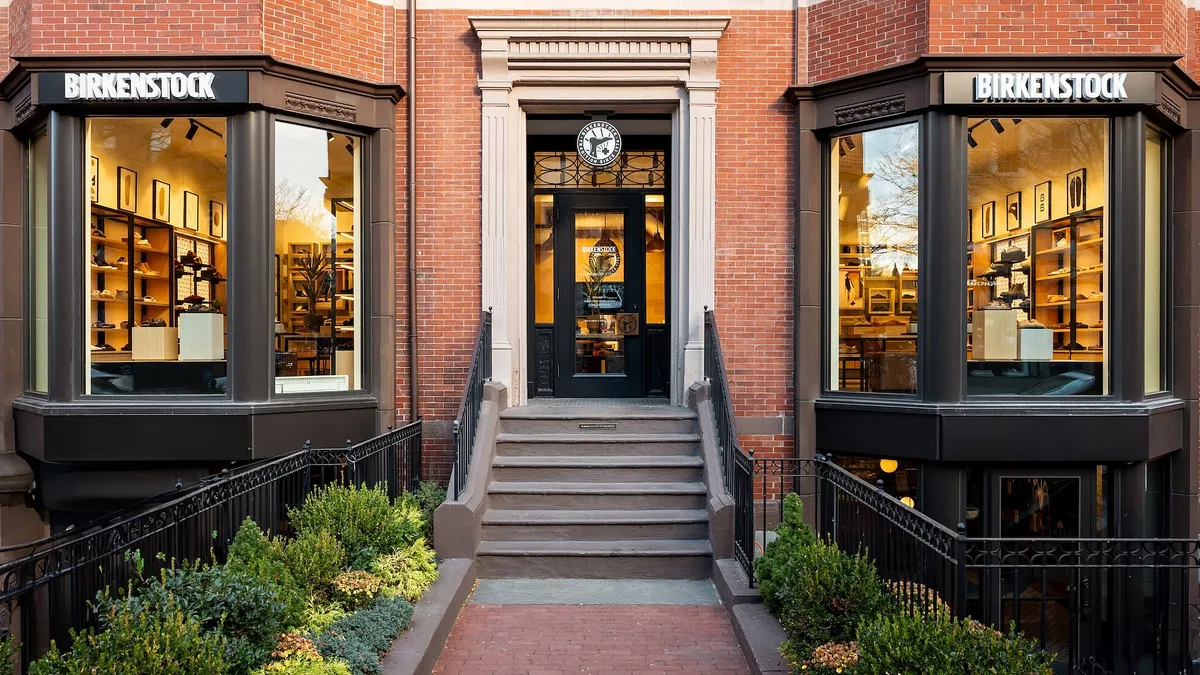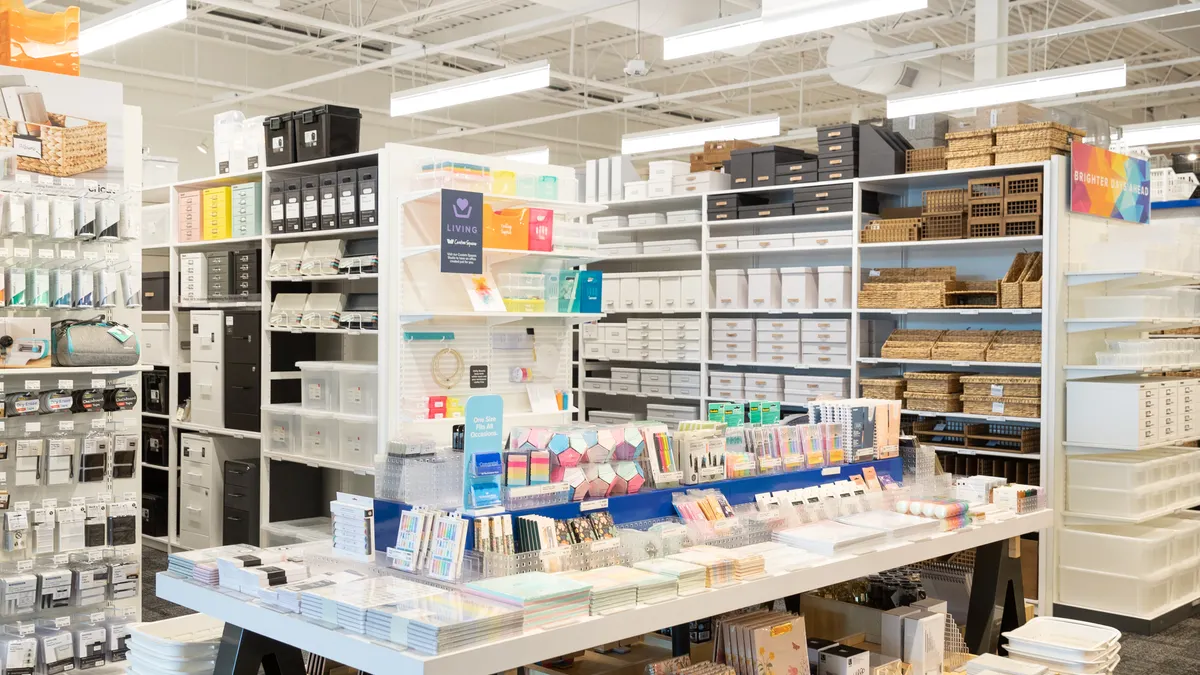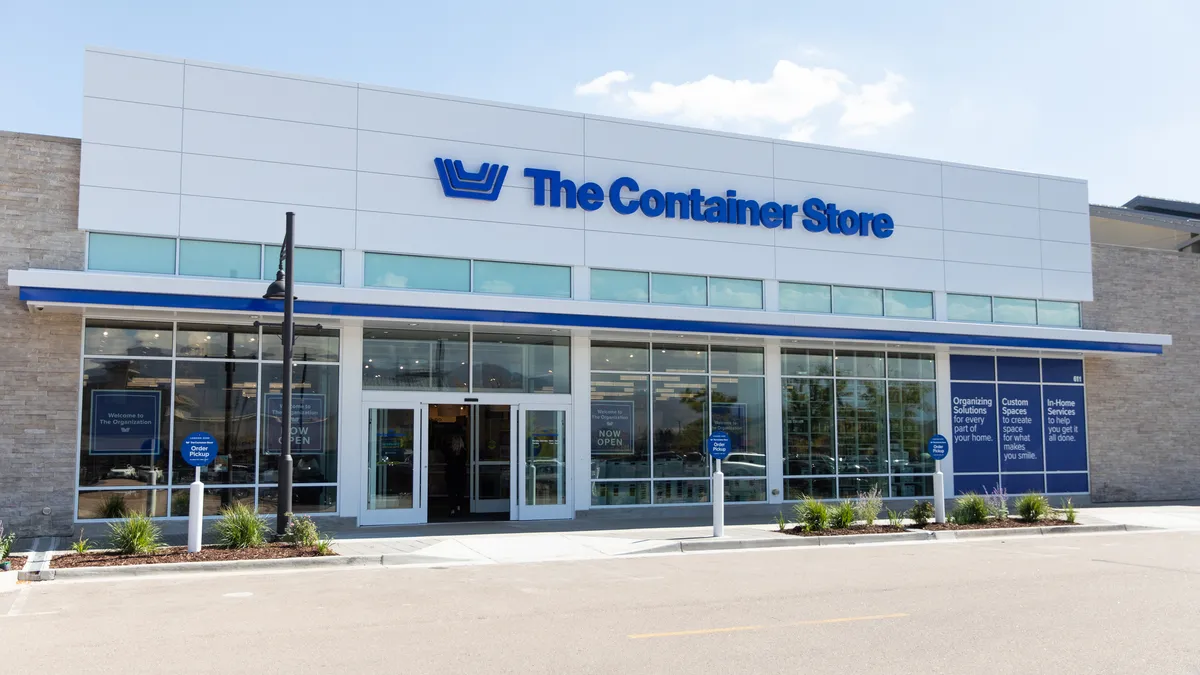To appreciate the turnaround the entire retail industry has made over the past year, consider the months of July and August.
In 2020, over those two months, 11 major retailers filed for bankruptcy. Over the course of just seven days last July, five retailers went bankrupt (The Paper Store, RTW Retailwinds, Muji USA, Sur La Table and Brooks Brothers).
During those same months this year, Retail Dive didn't track a single major bankruptcy in the industry. At the same time, we counted more than 15 deals in retail during July and August — including initial public offerings, company sales and other transactions. Even Guitar Center, which exited bankruptcy just last year, was reported by Debtwire to have filed confidentially for an IPO. Mattress Firm and Claire's, two other Chapter 11 alumni, have also filed for IPOs.
When the year began, few could have predicted some of these outcomes. "If somebody would have told me Guitar Center would be filing a confidential S-1 this year, I would have told them, 'You're crazy,'" Reshmi Basu, restructuring editor with Debtwire, said in an interview.
The deals are a sign that investors have confidence in the retail industry, that things are looking up after years of elevated bankruptcies going back to 2016. Across industries, U.S. corporate bankruptcies to date this year are at their lowest levels since 2014, while the consumer discretionary category still leads other industries with 48 total bankruptcies, according to S&P Global Market Intelligence.
Companies with a CCC-level credit rating make up less than 10% of the retail and restaurant category today, according to Sarah Wyeth, senior director and sector lead at S&P Global Ratings. Compare that number to last year, when the number of CCC issuers was nearly 30% of the sector as covered by S&P — meaning nearly a third of companies in the retail and restaurant industries were deemed at serious risk of defaulting on their debt.
According to Moody's data, there were just two defaults in the retail and apparel sectors as of Aug. 31 this year, compared to 16 defaults in 2020 and 10 in 2019.
So far this year, the number of major retail bankruptcies tracked by Retail Dive is well below those during the same periods in 2019 and 2017, and slightly below 2018 as well.
Joseph Malfitano, founder and managing member of Malfitano Partners, compares the current slowdown in distressed retail to the years directly following the Great Recession, when bankruptcies and liquidations "just dried up," in his words.
"This one, it's weird," Malfitano said of 2021. "You have this pandemic, and a lot of retailers restructured their balance sheets. They cut a lot of corporate costs, restructured a lot of leases and brought other costs down. I don't think people thought sales would kick up as much as they did."
'Money was flowing'
The government has played no small role in the industry's recovery. "The stimulus has just been an incredible tailwind for retail," said Pulse Ratings CEO Dennis Cantalupo.
It wasn't just government cash that pushed sales up. "The containment of the pandemic" has "enabled and motivated people to go back to stores," helping those retailers who either don't have a large e-commerce presence or whose customers prefer shopping in stores, Wyeth said.
As much as the pandemic created disruption, it also helped funnel consumer spending to the industry as the population broadly has held off on experiential spending on things like travel and dining out. "A lot of that cash flows through the balance sheet, and it's sustainable," Cantalupo said. "That cash will stay there for a while."
Some retailers that struggled in the years leading up to the pandemic, facing near if not outright distress, benefited directly from changes in consumer spending. Debtwire's Basu pointed to Joann and Michaels, whose declining sales turned around as consumers, stuck home, turned to crafting.
With sales trajectories now pointing up, Joann filed for an IPO this year, and Michaels sold itself to a private equity firm, Apollo Global Management.
And then there's GameStop, whose default risk metrics flickered earlier this year, but has since paid off its debt thanks to new company shares it sold to a market that had gone wild for its stock.
Many retailers that took on extra debt to survive the period of store closures and pandemic disruption broadly have been able to pay it down or refinance. With the Federal Reserve supporting debt markets and investors looking for yield, many have been able to score new deals that help push out maturities and add liquidity.
For example, Party City, which Retail Dive listed as a potential bankruptcy risk last fall, issued $725 million in new bonds that allowed it to pay off a loan facility that was set to mature next year.
"You have this scenario where sales were up, expenses on the corporate side were down, and money was cheap," Malfitano said. "Money was flowing. A lot of retailers were refinancing out of their existing credit facilities and getting larger facilities."
Another likely factor in the relatively small number of bankruptcies this year is the large number of bankruptcies last year. "We had so many big names file or do restructurings," Basu said.
Many of the retailers that filed in the dismal year of 2020 — among them Neiman Marcus, J. Crew, J.C. Penney and many others — had been teetering for years. They were hampered by their debt loads and competitive struggles, and unable to keep up with changes in consumer preferences.
As Cantalupo noted, those were bankruptcies that may have happened this year, next year or down the road, but they happened during the pandemic instead. And the Chapter 11 process gave many of those companies a chance to restructure and reduce their debt.
A lull or the new normal?
Hanging over all these developments are some obvious questions that don't have obvious answers: Will the slowdown in bankruptcies last? Is this a pause, or a new normal?
"We just don't know, because there are so many uncertainties, such as the delta variant, the stock market is feeling shaky," Basu. "Nobody wants to say definitively that this will go on."
Retail is still retail — low margin, fast-moving, unpredictable and constantly being changed by various technologies. "Our assumption is that things will revert, because it's a very, very competitive landscape," S&P's Wyeth said. "And consumers have so much power and transparency. It's just so hard for retailers."
While sales and profits for many are strong, for now, one source of pain for the industry is in the supply chain. Bottlenecks at factories, ports and on container ships have set costs skyrocketing, squeezed margins and created inventory shortfalls.
"We do hear of retailers saying, 'We're missing out on sales,'" Wyeth said. "Supply chain issues are limiting capacity, but at the same time retailers can charge full price."
Malfitano noted that retailers, searching to boost liquidity, have taken on new debt. Many also reached temporary agreements with landlords on lease costs that could begin expiring in the coming months. Add that to supply chain costs and inventory shortages, and you could see retailers begin burning cash starting early next year.
"Everyone is focused on the holiday. Nobody is really focused on what comes after the holiday," Malfitano said. "2022 will probably have some nasty outcomes."




















